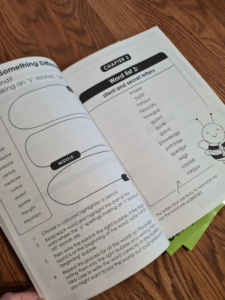Product spotlight: Use a small-steps multisensory strategy to improve spelling skills
Learning spelling is a tricky thing to practice. Unfortunately, there are numerous people who view spelling as a binary thing: you can either spell or you can’t. Spelling is a skill and you can learn to improve. But yes, it can be more challenging for some people than others.
Many people, and especially those with dyslexic traits or working memory issues, will find that the process of spelling is not automatic. There is a longer process when spelling compared with reading. You need to think of the word you want to spell in your brain within the context of the sentence you want to write (I would call this ‘generation’ and it is based on your receptive vocabulary and receptive and expressive language skills), you then need a good knowledge of the sound structure of the word (which depends on the strength of your underlying phonological awareness skills, being able to segment a word into sounds, as well as your phonics learning), you then need to know whether the word follows the phonic rules you can ‘hear’ or not. And if it doesn’t, what the alternative spelling might be (visual recognition of spelling patterns). After all this, you then need to write the word and then remember the whole sentence and move on to the next word. It’s actually a multi-stepped process and once you’ve finished one word, you start all over again…
I have helped lots of children with learning to spell. In my second year of teaching, we were using a 10 minute daily structured phonics session which today would not be out of place in any Key Stage 1 classroom – don’t let anyone tell you that phonics is new! I have also assessed many children who have had difficulty acquiring literacy skills many with dyslexic traits. This experience led me to want to provide a low-cost at home workbook for the trickiest words. Using a multi sensory approach and short bursts of practice, Step-by-Step to Spelling gives a good ‘way in’ to learning spellings of the Key Stage Two common exception words.

The way it works is through a step-by-step approach. For each chapter, there is something about the letter strings that we can learn so for example, the word might start with a vowel, consonant, consonant like the word ‘occupy’. The word is placed in a context through a sentence or thinking up your own sentence then there is opportunity to practise the spelling. Each practice ‘burst’ is short so that learning can be little and often. There is also opportunity to review the words you feel confident about at the end of the chapter and a totally different practice page to vary the learning.
This booklet could be used in school with a small group or at home but the main thing is that I hope that it helps the adult helping to feel confident that they are helping learning to happen. The book is not an endless testing cycle but a way to focus on how we practise the habit of learning and improving a little bit at a time. And if you have any questions about it, please do feel free to send me an email and I’ll do my best to help you.